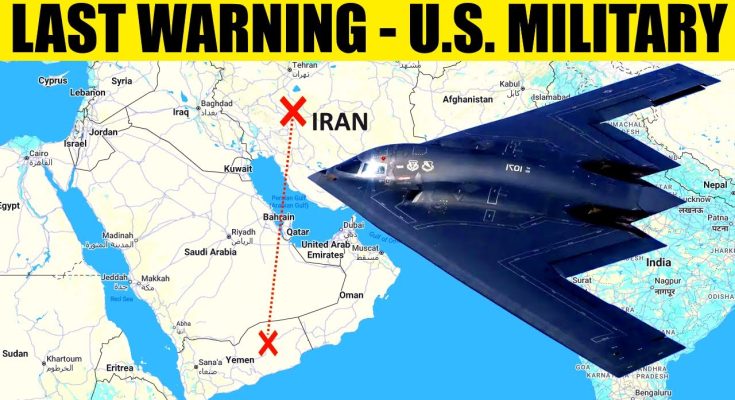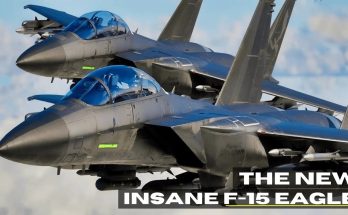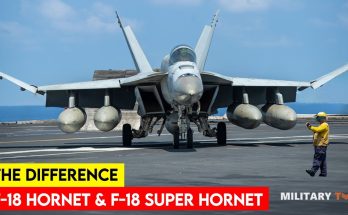Warning: U.S. Deploying B-2 Stealth Bombers to Iran
Recent reports indicate that the United States has deployed B-2 Spirit stealth bombers to the Middle East, particularly with a focus on Iran. This move, which has sent ripples through international security circles, has raised significant concerns about escalating tensions in the region. The deployment of such an advanced and strategic asset underscores the gravity of the situation and the high stakes involved in U.S.-Iran relations.
The B-2 Spirit: A Strategic Weapon
The B-2 Spirit is a long-range, strategic stealth bomber developed by Northrop Grumman. Known for its ability to deliver both conventional and nuclear payloads, the B-2 is one of the most advanced and capable aircraft in the U.S. military arsenal. Its stealth design allows it to evade radar detection, making it an ideal tool for penetrating sophisticated air defense systems and delivering powerful strikes on high-value targets.
The B-2’s primary function is to conduct deep-strike missions, with the ability to fly long distances undetected and strike adversary targets deep within enemy territory. Its ability to carry both precision-guided bombs and nuclear weapons makes it an asset that is often employed in high-stakes situations, including deterrence and retaliation scenarios. Given its capabilities, the deployment of B-2 bombers to the region is an unmistakable signal of U.S. military readiness.
Context of the Deployment
The deployment of the B-2 bombers is seen as part of a broader strategy by the U.S. to demonstrate force in the region. While the specific details and timing of the deployment remain classified, it is clear that the decision is driven by rising concerns over Iran’s military activities, particularly in regard to its nuclear ambitions and regional influence.
In recent years, tensions between the U.S. and Iran have been particularly fraught, especially since the U.S. withdrew from the Joint Comprehensive Plan of Action (JCPOA) in 2018, commonly known as the Iran nuclear deal. Since then, Iran has been gradually stepping away from its commitments under the agreement, including increasing its uranium enrichment levels, which has triggered concerns from the U.S. and its allies about the possibility of Iran developing nuclear weapons.
In addition to the nuclear issue, Iran has been involved in proxy conflicts throughout the Middle East, particularly in Iraq, Syria, and Yemen. The presence of Iranian-backed militias and its support for groups deemed hostile to U.S. interests has also contributed to the tension. With these ongoing challenges in the region, the U.S. has made it clear that it is prepared to take decisive military action if necessary.
The Message Behind the B-2 Deployment
Deploying B-2 bombers is a strategic move that serves several purposes. Firstly, it is a powerful message of deterrence. By showcasing its most advanced and lethal assets, the U.S. is signaling to Iran that it has the capability to strike decisively if Iran continues its destabilizing actions or pushes closer to developing nuclear weapons. The presence of such bombers, capable of reaching Iranian targets from bases in the U.S. or allied nations, indicates that the U.S. is prepared to use force if diplomatic measures fail.
Secondly, the deployment could be aimed at reassuring U.S. allies in the region, particularly Israel and Saudi Arabia, who have expressed concerns over Iran’s military advancements. By sending such a potent asset to the region, the U.S. is signaling that it stands by its commitments to regional stability and the defense of its allies.
Potential Consequences and Escalation Risks
While the B-2 deployment is a show of strength, it also carries significant risks. The presence of such advanced military assets in the region could provoke a strong response from Iran. Tehran may interpret the move as a direct threat and could take steps to escalate tensions, whether through military action or by advancing its nuclear capabilities further. The situation could spiral into unintended confrontations if not carefully managed.
Moreover, the B-2 bombers could become targets for Iranian missile systems, creating the potential for direct military conflict. Any strike on U.S. assets could quickly lead to broader escalation, with implications for both U.S. and Iranian forces, as well as global security.
Conclusion
The deployment of B-2 stealth bombers to the Middle East is a calculated move by the U.S. to assert its dominance in the region and send a clear message to Iran. The bombers’ stealth capabilities and long-range strike potential make them an important tool in the U.S. military’s strategic arsenal, designed to both deter aggression and reassure allies. However, the presence of these advanced bombers also heightens the risks of escalation, with the potential for increased tensions and the possibility of military conflict. As always, the situation in the Middle East remains fluid, and the world will be watching closely to see how Iran responds and whether further steps are taken by the U.S. to maintain regional stability.



